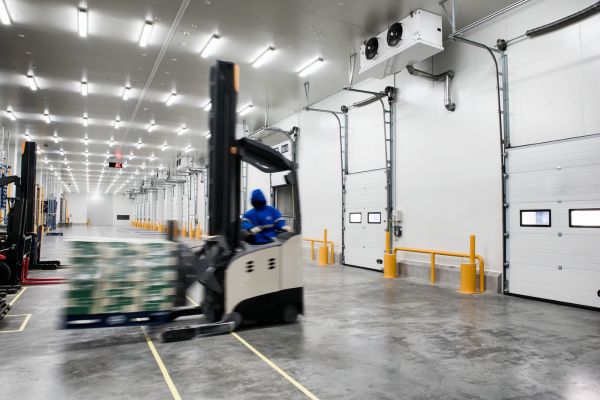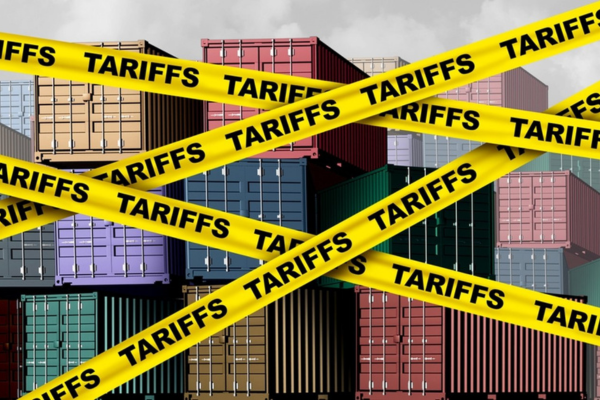Frozen and Refrigerated Cold Chain Insights
Welcome to The Cold Front, presented by RLS Logistics, the Cold Chain Experts! We proudly offer nationwide cold storage warehousing, ltl shipping, truckload freight brokerage, and eCommerce fulfillment cold chain solutions. This month’s edition focuses on these topics for our March 2025 issue: Tariffs’ effect on the Cold Supply Chain, Tariffs’ effect on Port Drayage, and a 2025 Cold Chain Outlook. The Cold Front is a monthly summary highlighting pertinent cold chain storage market data in one concise location. These insights ensure that you have the data to make better decisions to fuel your growth. We hope you find this information useful! If you want data on your specific market, click the button below.
Tariffs: How Will They Affect The Cold Supply Chain?
Recently, the U.S. administration has implemented a series of tariffs on imports from key trading partners, notably Canada and Mexico. These measures are poised to significantly affect the domestic food industry, affecting supply chains and pricing structures. The imposition of a 25% tariff on imports from Mexico and Canada is expected to increase costs for a variety of food products. Fresh produce, meats, and dairy items sourced from these countries will likely see price hikes as importers pass on the additional expenses to consumers.
For instance, a substantial portion of fresh fruits and vegetables consumed in the U.S. are imported from Mexico; with the new tariffs, these items may become notably more expensive, impacting household grocery bills nationwide. Beyond pricing, these tariffs introduce complexities into the food supply chain. Businesses that rely on cross-border trade are bracing for operational disruptions. Companies dependent on imports from Mexico and Canada are already experiencing higher prices and may face the need to downsize operations or lay off workers if consumers resist price increases. Perishable goods are at risk, as importers may struggle to absorb higher costs, potentially leading to unmarketable produce and supply shortages.
These developments necessitate strategic reassessment for stakeholders within the food industry, including retailers, suppliers, and logistics providers. Exploring alternative sourcing options, investing in domestic production capabilities, and enhancing supply chain resilience are critical steps to mitigate the adverse effects of these trade policies. Collaborative efforts and proactive planning will be essential to navigate this evolving landscape and ensure American consumers’ continued availability and affordability of food products.
Tariffs: How Will They Affect Port Drayage
A recent article by The Journal of Commerce highlighted a concerning trend: the contraction of U.S. drayage capacity is outpacing demand, leading to significant challenges in the final mile dray. The article cites that although the number of US drayage providers fell 14% from last year, it is still higher than the number of providers in 2019.
This imbalance is attributed to driver shortages, equipment constraints, and port congestion, which have intensified post pandemic. As we navigate these disruptions, the imposition of tariffs adds another layer of complexity. Historically, tariffs have led to fluctuations in import and export volumes as businesses adjust their strategies in response to increased costs. For instance, anticipating tariffs has previously caused importers to expedite shipments before tariff implementation, resulting in surges that strain an already burdened cold storage and drayage system. In the cold chain logistics sector, these challenges are very evident.
Perishables goods necessitate a timely and efficient cold supply chain. Any delays can compromise product integrity, leading to product loss and potential food safety concerns. To mitigate these risks, stakeholders must foster strong partnerships with logistics providers. Collaborative relationships can enhance flexibility and responsiveness, enabling businesses to adapt more effectively to capacity constraints and tariff-induced disruptions.
2025 Cold Supply Chain Outlook
As we look toward 2025, it’s impossible to ignore the rising chatter around tariffs—particularly those targeting imports from Canada, Mexico, and China. The purpose behind these measures, as always, is to stimulate domestic production and reward American providers. But there’s another side: tariffs have a well-documented history of alienating trade partners, distorting supply chains, and stoking inflation across most industries—including the cold supply chain. And the stakes are even higher for those specializing in moving temperature-sensitive freight.
We operate in a world where timing is everything. Delays caused by sudden import surges, drayage bottlenecks, or port congestion don’t just create inefficiencies; they can disrupt the supply chain enough to cause a disruption that could change the market. Although the transportation landscape still shows signs of loose capacity, we are seeing signs of tightening, and providers will need to get creative with planning. If sweeping tariffs are here to stay, we could see a repeat of the bullwhip effect we experienced in 2019: companies front-loading imports, capacity tightening in all the wrong places, and logistics providers scrambling to adapt.
Only time will tell whether these trade strategies deliver the intended results. In the meantime, we must be proactive. That starts with strengthening collaboration across partner networks—shippers, 3PLs, carriers, and suppliers. Most importantly, we need to prepare for what we know is coming: uncertainty. As always, those who plan and build agility into the supply chain will be the ones who keep freight moving.




